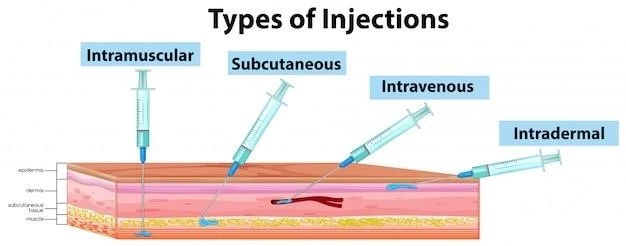Epidermolysis Bullosa, Junctional, Herlitz-Pearson
Overview of Epidermolysis Bullosa, Junctional, Herlitz-Pearson

Epidermolysis Bullosa (EB) is a group of genetic skin conditions causing fragile skin leading to blistering and wounds. Junctional EB, particularly the Herlitz-Pearson subtype, is a rare and severe form characterized by blistering inside and outside the body.
This type of EB is inherited in an autosomal recessive pattern, caused by mutations affecting proteins essential for skin integrity. Symptoms usually appear in infancy and can be severe, with extensive blistering and scarring.
Individuals with Junctional EB Herlitz-Pearson experience painful blisters, open wounds, and blood loss due to skin fragility. This condition requires specialized care to manage symptoms and prevent complications.
Supportive care, such as wound dressings, pain management, and nutritional support, is vital in maintaining quality of life. The prognosis varies depending on the severity of the condition and complications that may arise.
Research into EB, including genetic mutations and potential treatments, is ongoing to improve management strategies and outcomes for individuals affected by this challenging condition.
Symptoms and Complications
Junctional Epidermolysis Bullosa (EB) Herlitz-Pearson presents with a range of distressing symptoms. Patients often experience widespread blistering, particularly on the skin, in the mouth, throat, and digestive tract. These blisters can lead to painful open wounds, making daily activities challenging.
Individuals with this severe form of EB are at high risk of complications, including infection due to open wounds, scarring that can restrict movement, anemia from blood loss, and poor nutritional status. The constant blistering and wound formation can impact the overall quality of life for both patients and their families.
Moreover, the chronic nature of these symptoms can result in psychological issues such as anxiety and depression. It is crucial to address both the physical and emotional aspects of living with Junctional EB Herlitz-Pearson to provide holistic care and support for those affected.
Early recognition of symptoms, prompt wound care, and a multidisciplinary approach involving dermatologists, genetic counselors, nutritionists, and mental health professionals can help in managing the symptoms effectively and reducing the risk of complications.
Diagnosis and Prognosis
Diagnosing Junctional Epidermolysis Bullosa (EB) Herlitz-Pearson involves a thorough clinical evaluation, genetic testing, and skin biopsy to confirm the subtype. It is essential for healthcare providers to consider the symptoms, family history, and genetic markers when making a diagnosis.
Prognosis for individuals with this severe form of EB can vary depending on the extent of skin involvement, the presence of complications, and access to appropriate medical care. Early diagnosis and comprehensive management can improve the prognosis and quality of life for patients.
Regular follow-up with a specialized healthcare team, including dermatologists, wound care specialists, and genetic counselors, is crucial in monitoring the progression of the disease and addressing any emerging complications promptly. A proactive approach to treatment can help individuals with Junctional EB Herlitz-Pearson lead fulfilling lives despite the challenges posed by the condition.
Treatment and Management
The management of Junctional Epidermolysis Bullosa (EB) Herlitz-Pearson requires a multidisciplinary approach to address the complex needs of patients. Treatment focuses on symptom control, wound care, infection prevention, and nutritional support.
Wound care plays a critical role in managing EB symptoms. Gentle handling of the skin, daily wound dressings with non-adherent materials, and avoiding friction can help prevent blister formation and reduce the risk of infection.
Pain management strategies, such as the use of topical ointments or oral analgesics, can improve the quality of life for patients experiencing discomfort from blisters and open wounds. Nutritional support is essential to prevent malnutrition and support overall health.
Regular monitoring for complications, such as infections and anemia, is necessary to intervene early and prevent further health issues. Working closely with healthcare providers to develop a personalized care plan can optimize outcomes and enhance the well-being of individuals living with Junctional EB Herlitz-Pearson.
Lifestyle and Support
Living with Junctional Epidermolysis Bullosa (EB) Herlitz-Pearson can present challenges that affect daily life. It is essential for individuals and their caregivers to prioritize self-care, physical well-being, and emotional health.
Adapting the living environment to reduce the risk of skin trauma, using soft clothing and bedding, and maintaining a moderate room temperature can help in managing symptoms. Skin protection techniques, such as frequent moisturization and avoiding harsh chemicals, can also be beneficial.
Seeking emotional support through counseling, support groups, or connecting with others facing similar challenges can provide a sense of community and understanding. Caregivers and family members also require support to cope with the demands of caring for a loved one with a complex condition.
Engaging in activities that bring joy and fulfillment, while being mindful of any physical limitations, can contribute to a positive outlook and enhanced quality of life. It is important to strike a balance between addressing the medical needs associated with EB and maintaining a sense of normalcy and well-being.
Advances in Research and Genetic Mutations
Ongoing research into Junctional Epidermolysis Bullosa (EB) Herlitz-Pearson focuses on understanding the underlying genetic mutations responsible for the condition. Identifying specific gene mutations allows for targeted therapies and personalized treatment approaches.
Advances in genetic testing techniques have enabled healthcare providers to diagnose EB subtypes more accurately and provide tailored care plans. The emergence of gene therapy and gene editing technologies holds promise for potential disease-modifying treatments in the future.
Clinical trials investigating novel therapies, such as protein replacement therapy and stem cell transplantation, aim to improve the lives of individuals with EB by addressing the root cause of the condition. Collaboration between researchers, healthcare professionals, and patient advocacy groups is crucial in driving progress in EB research.
Understanding the complex interplay of genetic factors contributing to EB development is key to developing effective interventions that target specific pathways involved in skin fragility. Stay informed about ongoing research efforts and consider participating in clinical trials to contribute to the advancement of treatment options for Junctional EB Herlitz-Pearson.
